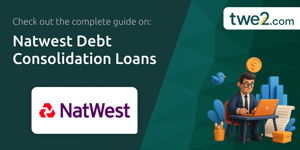
Investing in 2025 demands more than picking a stock or ETF. It requires a deep dive into platform costs, tools, and service levels. This guide will help you uncover hidden fees, compare essential features, and make choices that align with your goals.
In an era of headline “free trading” promises, surface-level marketing can hide long-term costs. Even platforms boasting zero commissions may levy account maintenance or research fees that quietly erode returns.
Understanding all charges—from visible trading commissions to subtle account or inactivity fees—is the first step in safeguarding your wealth. Focusing on the total cost of investing empowers you to compare providers on equal footing, ensuring your hard-earned money stays invested, not siphoned off by unnecessary charges.
Fees typically fall into several categories. Knowing each type helps you predict costs and tailor your platform choice.
Management Fees are assessed as a percentage of assets under management (AUM). Low-cost brokers and ETFs may charge as little as 0.03%, while actively managed mutual funds can demand up to 1.5%. Some platforms tier their fees—1.5% on the first $100,000, then 1.25% up to $500,000—reducing rates as balances grow.
Flat Fees apply on micro-investing apps like Acorns, which charge $3–$5 per month. For small balances, this can equal an annual rate above 3%, making percentage-based models more attractive once your portfolio exceeds roughly $3,600.
Trading/Commission Fees remain relevant despite the zero-commission trend. Specialty assets or certain account types may still incur $4.95–$5 per transaction. Active traders should calculate expected trade volume to forecast annual costs accurately.
Hidden Costs can include annual maintenance fees ($50–$75), inactivity charges ($50–$200), account closure/transfer fees ($50–$75), and paper statement charges ($1–$2 per month). Factor these into your comparison to avoid surprises.
Beyond costs, the quality and breadth of services shape your investing experience. Evaluate each platform on these criteria:
Diverse selection of investment products ensures you can build a balanced portfolio. Look for access to stocks, ETFs, mutual funds, fractional shares, bonds, and international markets.
Expense ratios on mutual funds and ETFs matter most over decades. Index funds may charge as little as 0.02%, while actively managed counterparts can exceed 1.5%. These ratios are recurring, so small differences accumulate significantly.
Research and educational tools range from basic news feeds to premium data subscriptions costing $1–$30 monthly. For beginners, robust learning modules and interactive tutorials are invaluable for building confidence.
Automated portfolio management and rebalancing through robo-advisors like Schwab Intelligent Portfolios, Fidelity Go, or hybrid models can streamline investing. Fees hover between 0.2% and 0.7% AUM, offering hands-off diversification with periodic human advice available on select tiers.
Accessible account minimums democratize investing. Digital-only platforms may accept as little as $1–$10, while premium services requiring human advisors often start at $25,000.
To illustrate how fee and feature combinations play out, consider this side-by-side snapshot of three category leaders:
This comparison reveals how tailored each platform type can be: low-cost brokers excel on fees, traditional firms on personalized guidance, and robo-advisors on simplicity and automation.
Smart investors blend platform strengths with personal preferences. Adopt these tactics to keep fees low and returns high:
Additionally, consider consolidating accounts to qualify for tiered fee breaks, and leverage promotional offers such as free trade credits or waived transfer fees.
Fees may seem technical, but their impact is profoundly personal. Over a 30-year horizon, a mere 0.25% difference in management fees on a $200,000 portfolio can amount to tens of thousands of dollars.
To translate knowledge into action:
Armed with insights into zero-commission trades for stocks and ETFs and detailed fee breakdowns, you can confidently navigate platform offerings. By focusing on the factors that matter—cost, features, and support—you transform investing from a guessing game into a strategic pursuit of financial freedom and growth.
References













